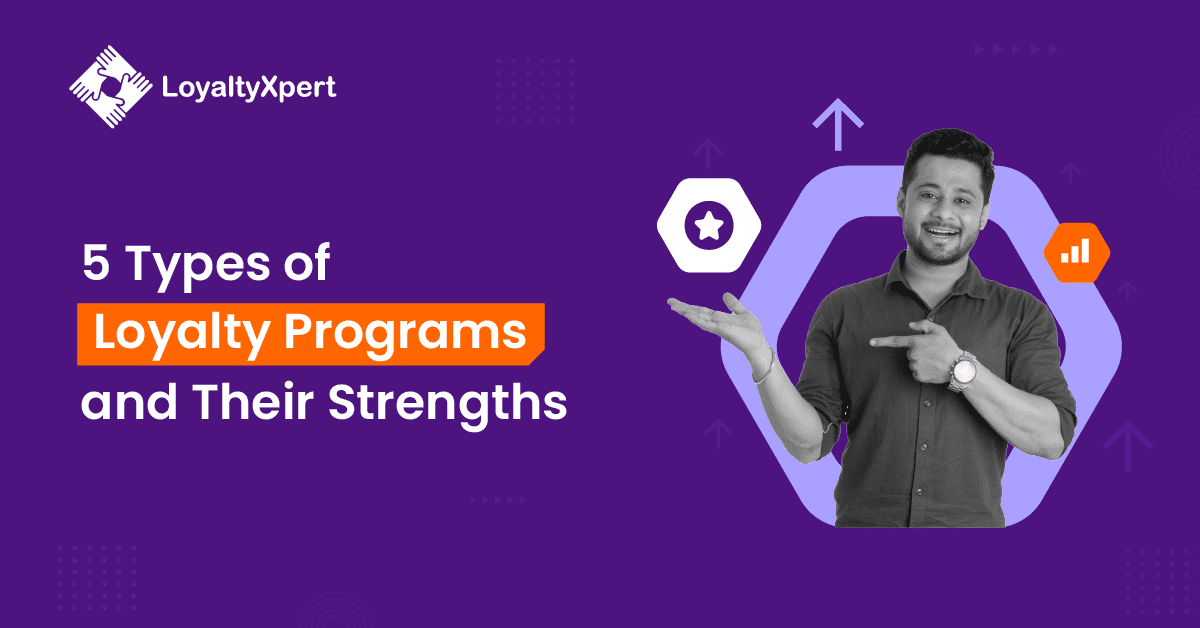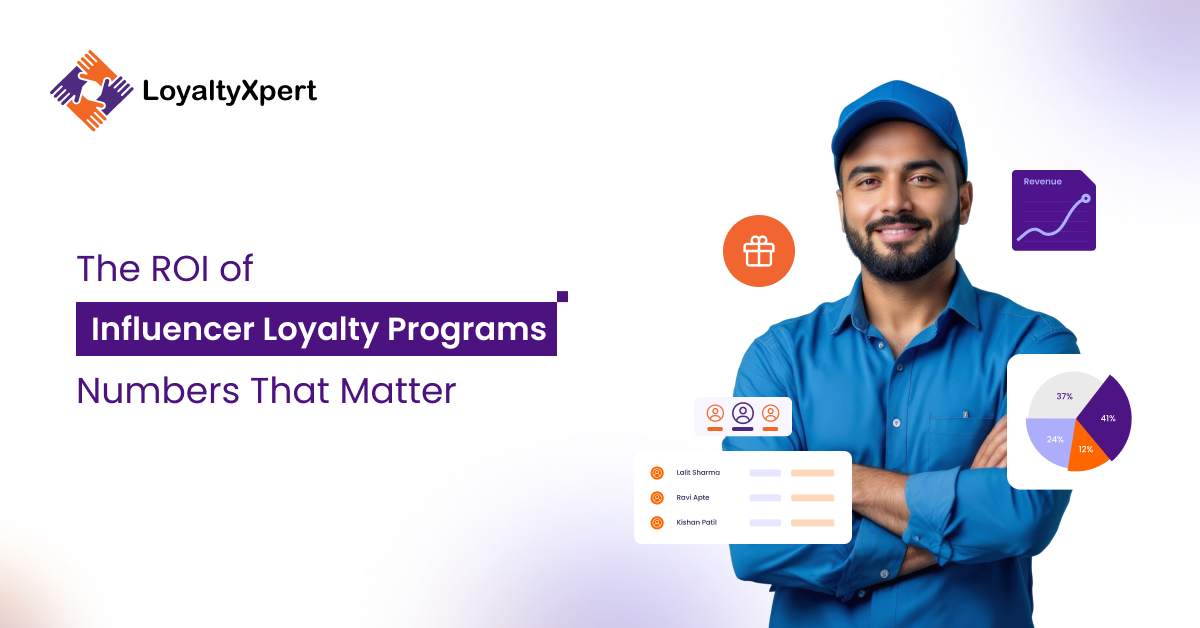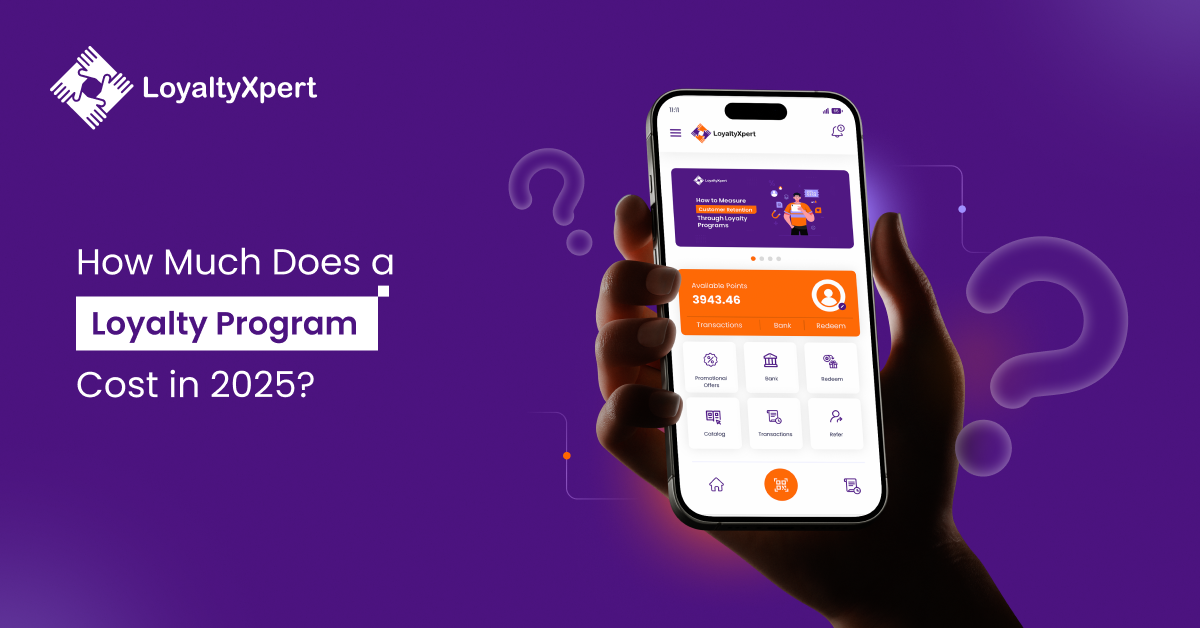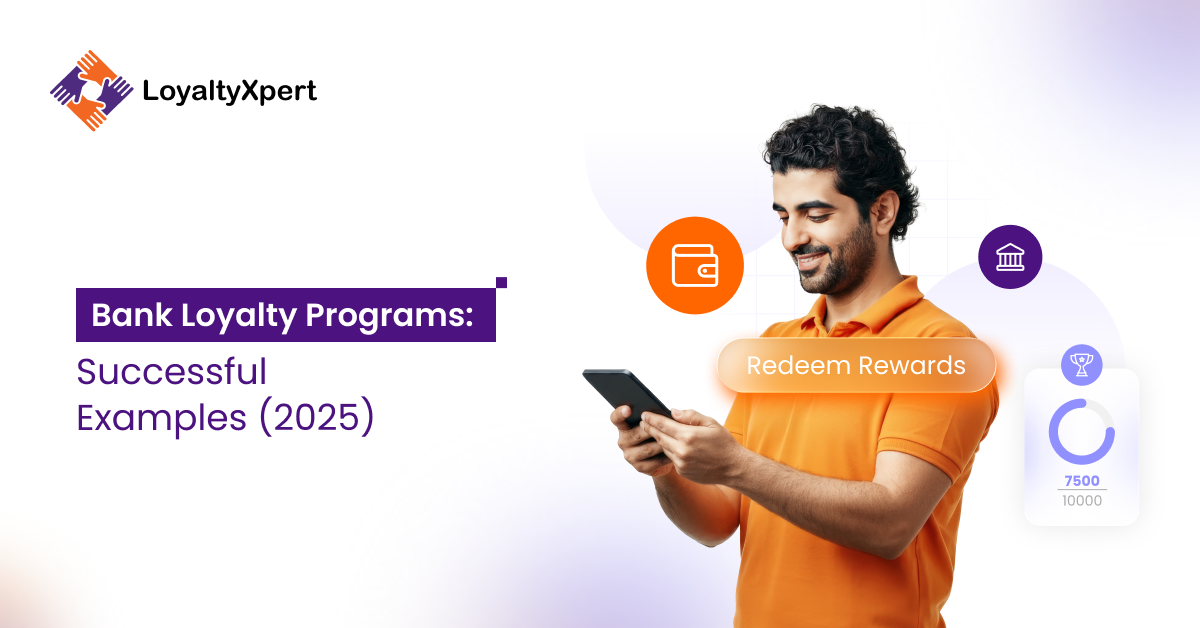CONTENT
What comes to your mind when you hear the term “loyalty programs?” Some may think of tiers and points, while others may think of discounts and exclusive offers. But a loyalty program is much more than that!
If you are planning to create a loyalty program, you will be amazed to know the varieties of loyalty programs. Like many great things in the world, loyalty programs come in different forms and types.
At LoyaltyXpert, we have not only helped our clients create several types of loyalty programs but also used an effective combination of two or more loyalty programs. In this blog post, we have discussed five types of commonly used loyalty programs as well as their connection with each other in detail. Read on and thank us later.
1. Tiered Loyalty Programs
If you have ever come across a loyalty program that uses the name of precious metals (Silver, Gold, and Platinum) to christen different clubs and offers different benefits to members in different clubs, then it’s nothing but a tired loyalty program. As the name suggests the loyalty program sets aside different rewards for different tiers (levels) and it provides more valuable rewards to members in higher tiers.
A study found that almost two-thirds of customers adjust their purchases and spending on brands to get the most out of loyalty points. That’s the main objective of tiered loyalty programs. That’s why it isn’t surprising to know that tiered loyalty programs are one of the most profitable loyalty programs for businesses.
Some of the best examples of tiered loyalty programs are Total Tools’ Insider Rewards and the American Airlines Advantage Program (Advantage Gold, Advantage Platinum, and Advantage Platinum Pro).
2. Subscription-Based Loyalty Programs
Also known as paid or premium loyalty programs, a subscription-based loyalty program needs its members to pay an advance or recurring (monthly, quarterly, or yearly) fee to join. Even though a majority of subscription-based loyalty programs entail an upfront contribution, many loyalty programs allow members to make recurring payments.
The main benefit of these loyalty programs is that it helps businesses retain customers for a specific period and drive higher sales. One research by McKinsey revealed that members who subscribe to paid loyalty programs are 60% more likely to make purchases. However, customers who join free loyalty programs are just 30% more likely to do that.
One of the most successful and famous examples of a subscription-based loyalty program is Amazon Prime, which offers many benefits such as free shipping, same-day delivery, access to early deals, exclusive offers and content (movies, web series, shows), and more. Another excellent example of a paid loyalty program is CVS Pharmacy’s CVS CarePass. The premium loyalty program of the United State’s leading pharmacy chain requires its members to pay an upfront fee and enjoy a wide range of benefits such as free 1-2 day delivery, 24/7 access to CVS pharmacist helpline, 20% discounts on certain products, and promotional reward worth $10.
3. Points-Based Loyalty Program
As the name suggests, a points-based loyalty program rewards members with points for every transaction, engagement, or activity (such as taking part in surveys or providing feedback). This is the most common and widely-used loyalty program in the world. The accumulated points get translated into specific rewards. When customers collect a certain amount of points, they can use those to receive a discount or get a product.
As per a study, six out of ten internet users believe earning loyalty points and rewards is one of the most rewarding parts of their shopping experience. Another data found that seven out of every ten customers’ brand choice is heavily influenced by their capacity to earn rewards program points.
As a point-based loyalty program is the most common loyalty program in the world, there are plenty of successful examples. One of the best examples is Chipotle Rewards—the point-based loyalty program of American fast casual restaurant chain Chipotle, which specializes in bowls, burritos, quesadillas, salads, tacos, and more Mexican dishes. The program rewards joining members with points, and when customers accumulate sufficient points, they get free food and products.
[pafe-template id=”10457″]
4. Value-Based Loyalty Program
Did you know that a brand can retain its customers for a lifetime by aligning its business’s values with customers’ values? As per a recent study, almost 60% of customers said that they would like to stick with brands that align with their values.
Another Statista data confirmed that six out of ten customers were more likely to join a brand’s loyalty program if it’s based on brand values. As per the stat, millennials scored the highest (with 66%) and Gen Zs were second (with 64%).
Value-based loyalty programs highlight the business’s values and align that with customers’ values. By using this loyalty program, a business promises to donate a portion of its sales to charities. This can help customers to select the charities that best align with their values.
Businesses that use value-based loyalty programs aim to build deeper connections with customers. Before running this type of loyalty program, it’s extremely crucial to define your values as well as find out the values of your target customers.
One of the best examples of value-based loyalty programs is Toms Shoes’ Toms Rewards and Passport Rewards. In this, members gain specific points on every purchase and they can redeem the points for products or donations. The secret sauce to Toms Shoes’ success is its mission to do good while making its customers look good. For every pair of shoes the company sells, it donates a pair to underprivileged children in different parts of the world.
5. Spend-Based Loyalty Programs
The name itself is quite self-explanatory. In spend-based loyalty programs, members collect loyalty points as per the amount they spend with a brand. The more you spend, the more points you get! The best thing about this type of loyalty program is that it’s extremely easy to create, manage, and understand. It has also proven to be an effective way to increase transaction amounts and reduce customer churn rates.
For example, Sephora’s Beauty Insider loyalty program has three tiers, two of which are categorized by spending. The tiers are VIB and Rouge. In the loyalty program, all members earn one point for every dollar they spend. The VIB tier requires members to spend a minimum of $350 following which they will receive 15% off on seasonal savings events and free standard shipping after buying products above $35. The Rouge tier requires members to spend a minimum of $1000 following which they will receive 20% off on seasonal savings events and free standard shipping for no minimum order size.
All said and done
Even though loyalty programs come in different types and forms, they have one thing in common—to attract new customers and retain existing customers for a long time. Many companies are getting excellent results by understanding the strengths of different types of loyalty programs and combining complementary ones.
At LoyaltyXpert, we have helped many B2B and B2C businesses in creating different types of loyalty programs and we can do the same for you. To know more about our services and get a free trial, contact our team of experts today.
See how a smart loyalty program can boost your sales.
Get a free demo and discover how to drive loyalty with ease.
FAQs
Ajay Pareek
President of Sales - LoyaltyXpert
Ajay Pareek is a seasoned Sales leader with over 30 years of experience in building and scaling B2B digital platforms. His expertise lies in crafting innovative solutions for channel engagement, loyalty programs, and comprehensive sales management. Ajay has been instrumental in driving substantial growth and profitability for the company through his strategic leadership.




